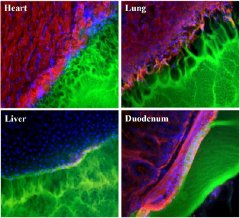Product revenues which consists primarily of BioGlue and HemoStase increased 5% in the second quarter of '09 compared to the second quarter of '08 and increased 6% in the first half of '09 compared to the first half of '08. We had a very difficult prior year quarterly comp for BioGlue as the second quarter of last year was by far our best quarter during 2008.
BioGlue revenues were 12.4 million and 24.1 million for the second quarter in the first six months of '09 compared to 13 million and 24.9 million for the corresponding periods in '08. BioGlue revenues in the second quarter of '09 did improve over the first quarter of '09 with an increase of 5%.
Excluding the effects of changes in foreign currency exchange rates year-over-year which reduced BioGlue revenues by 331,000 and 639,000 in the second quarter and first six months of '09, BioGlue revenues would have been 12.7 million and 24.8 million.
HemoStase revenues for the second quarter and first six months of '09 were 1.5 million and 2.6 million. HemoStase was added to our product portfolio in the second quarter of '08.
Tissue processing and product gross margins were 63 and 64% for the second quarter and first six months of '09 compared to 66 and 65% for the corresponding periods in '08. We expected to see this decrease in gross margins as HemoStase sales which carry a lower gross margin than our recent aggregate gross margins continue to grow. And with some pricing pressure that we've seen as a result of the economy and it's effect on hospital purchasing patterns.
Tissue processing and product gross margins were 63 and 64% for the second quarter and first six months of '09 compared to 66 and 65% for the corresponding periods in '08. We expected to see this decrease in gross margins as HemoStase sales which carry a lower gross margin than our recent aggregate gross margins continue to grow. And with some pricing pressure that we've seen as a result of the economy and it's effect on hospital purchasing patterns.
Once we receive final IDE approval, our clinical study will evaluate BioFoam as an adjunct on cessation of bleeding by ligature or conventional methods is ineffective or impractical on liver parenchyma. This is a two part investigation including a feasibility phase followed by a pivotal phase. Both phases will be prospective, multi-center, randomized and controlled.
The feasibility phase of the investigation will be conducted at a maximum of two investigational sites. And we'll enroll 20 eligible subjects. The pivotal investigation will include a total of 164 eligible subjects, 82 subjects and each treatment group enrolled across a maximum of 10 investigational sites.
We believe that we can obtain commercial approval in approximately two to three years. We think the annual worldwide market opportunity for a product like BioFoam used for the sealing of abdominal parenchymal tissues is over a 100 million. We continue to evaluate other potential uses for BioFoam including its clinical utility in the treatment of traumatic injuries and in cardiovascular surgery.


 safety of plasma-derived biologic products. The decision is anticipated to have international implications, because an estimated 50% of the world's plasma supply is provided by the United States.
safety of plasma-derived biologic products. The decision is anticipated to have international implications, because an estimated 50% of the world's plasma supply is provided by the United States.

.jpg)
